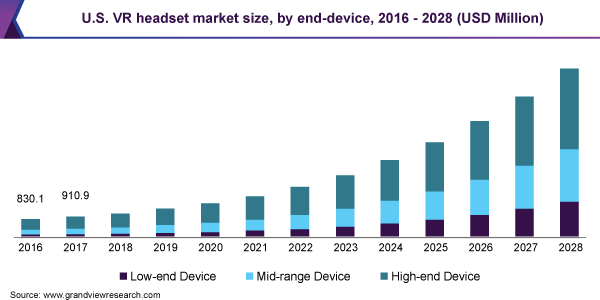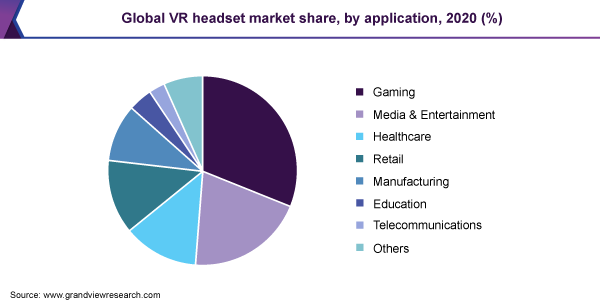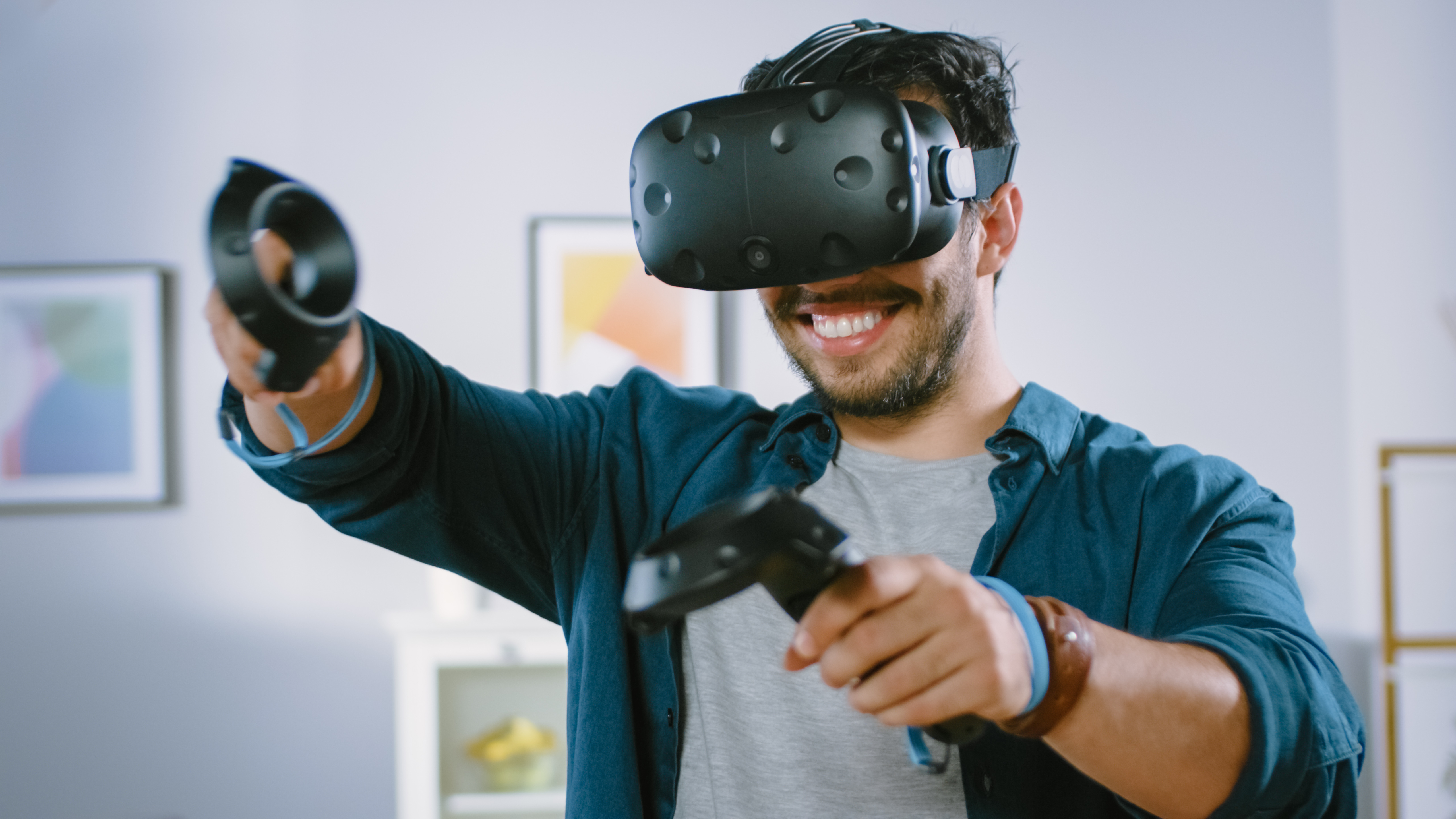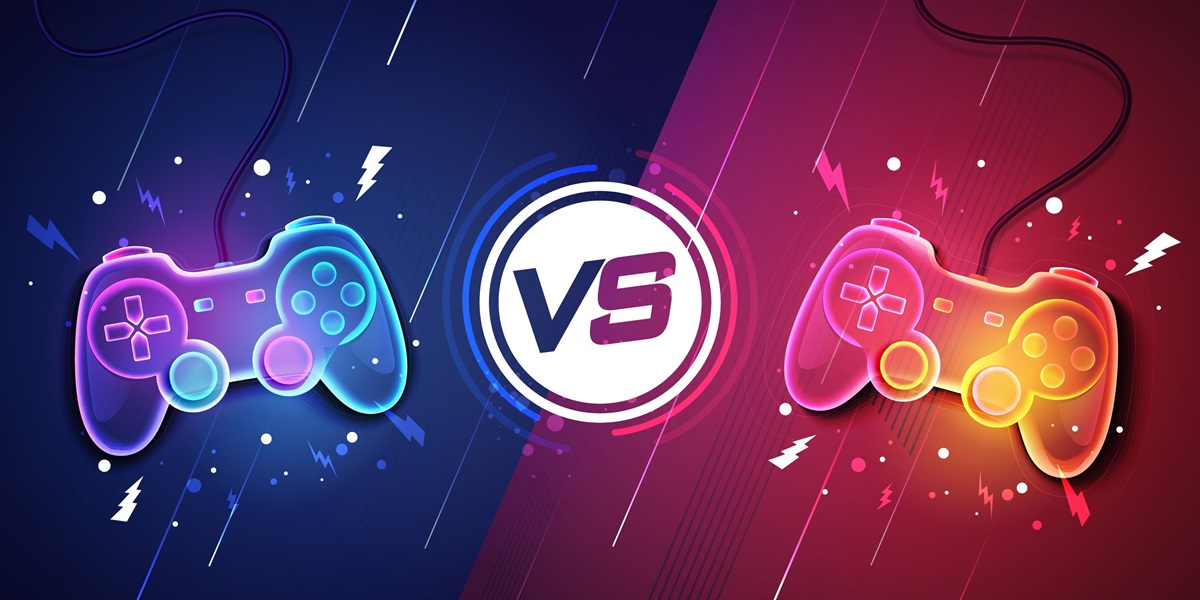VR Headset - Market Size, Industry Trends, Types, and Future Scope
VR headsets are a growth enabler as they offer a wide range of immersive and “real world” experiences. The global VR headset market size valuation in 2020 was at USD 7.81 billion and may show a CAGR of 28.2% from 2021 to 2028.
Key drivers Enabling Growth of the VR Headset Markets.
Widespread application of virtual reality solutions in the military, automotive, gaming, medical training, industrial prototyping, and education is fuelling the growth.
The VR headset industry's impact is growing simultaneously, and many more models are emerging in the space.
The increasing product adoption in the gaming and entertainment industries boosts the demand for VR Head-Mounted Devices (HMDs).

Application Insights for VR Headsets
The Gaming sector led with a share of 30.0% in 2020. It is expected to retain the top position in the coming years.
Area Wise Insights
The U.S. is a significant consumer and has several companies investing and specializing in the sector, leading to a reduction in the prices of VR headsets with processors and screens.
Europe sees an increase in integrating intelligent devices and VR headsets in defense, entertainment, and education, to augment the visual experience.
The increasing deployment of VR technology in gaming studios, cafes, amusement parks, and exhibitions boost the market growth.
The APAC Region
The Asia Pacific region held 40% of the market share in 2020, said the Grandview report, with the growth driven mainly by the developments of virtual reality in the entertainment and gaming industry.
Types of VR Headsets
There are various categories of VR headsets to offer users the Virtual Reality and mixed reality experience. There are tethered and standalone headsets and some that make use of a smartphone. With each having its benefits and disadvantages, the user has to determine the best buy depending upon the use case, budget, and experience required.
1. SmartPhone VR Headsets
Mobile VR headsets are smartphone compatible. It is a wearable device like smart glasses that you place the phone in. The lenses capture the image from the phone and project two images which give the impression of a VR experience by immersing you in the split image setup.
These are cost-effective, wireless, and convenient. As it utilizes the processing of the smartphone, there is no need for any other device. However, the quality of the experience is dependent upon the phone quality. Phone screens may be “VR compatible” but are not advanced enough for a 3D interactive output.
Major Applications:
- Casual Gaming
- Watching movies
- Social VR experience
2. Standalone Headsets
Standalone VR headsets or “all in one” VR headsets are independent devices with in-built technology. They can connect wirelessly to consoles or computers, clip-on packs.
- Major Applications:
- Casual gaming
- Watching movies
- Social VR
3. Tethered Headsets
The tethered VR headsets have to be wired to a PC and offer the highest quality immersive experience, and are the most expensive in the category. They are best used for powerful gaming PCs and take up space as well.
Major Applications:
- Professional sectors
- Gaming Arcades
- Education sector
- Tourism departments
- Art and designing departments
Future Potential of the VR headset Market:
As per the VR headset Grandview Market Report, the standalone VR headsets held the largest share of over 43% in 2020 and will continue to grow. The key players are innovating with new features and prices.
The smartphone-enabled VR headsets will see a growth of over 30% till the forecast period of 2028. This may be on account of the introduction of VR-compatible smartphones with enhanced AI and 3D technology.
The standalone PC tethered VR headset will trend in the gaming segment due to the high-quality immersive experience. As a result, the key players are working to enhance the experiences that gamers can avail themselves of.
Major Players in the VR Headset Domain
Facebook Technologies, LLC (Oculus), Sony Corporation-Sony PlayStation VR, HTC Corporation -HTC Vive Cosmos, LG, Microsoft Windows Mixed Reality, Google LLC- Google Cardboard and the Samsung Electronics Co., Ltd.-Samsung Carl Zeiss AG, Gear VR are some of the big players and brands in the VR headset market.
The Virtual Becomes a Reality
VR technology is gradually becoming a part of our day-to-day life as it becomes more affordable and its range of applications increases. The mobile headset may serve well as a tester kit and encourage consumers to try on other variants.
The ultimate aim of technology is to make the lives of humans better and more qualitative. VR is an exciting technology that has endless applications. The question is, how are we going to use it for the benefit of humanity?
EDIIIE - Experts in Designing Innovative, Interactive, and Immersive experiences is one of the largest virtual reality companies, aiming to provide exceptional quality and satisfaction through our services.






